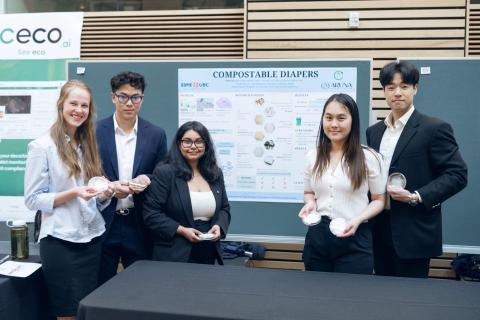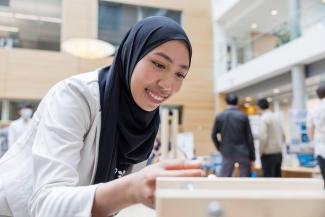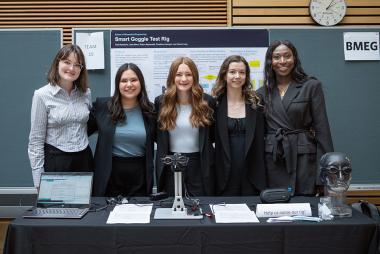
Johnny Cai, Wendy Ma, Alex Jung, Sabiha Sultana and Hannah Tesch
- Community Partner: Aruna Revolution Health
- Degree: Bachelor of Applied Science
- Program:
- Campus: Vancouver
Our inspiration
Rashmi Prakash, the co-founder of Aruna Revolution, was an amazing mentor. She inspired us with her vision of what’s possible, as well as her experience working with materials and transforming them into sustainable products.
More About UBC Alum, Rashmi Prakash
What excited us most
None of us have a background in materials research, so there were lots of opportunities to push ourselves in new directions. We had to be creative and look to different sources of materials.
The actual process of extracting fibre from materials and transforming it into a non-woven sheet was very exciting. There was definitely a lot of trial and error, but we were very persistent, and were ultimately able to come up with a process that worked. We also used some statistical software that helped us optimize our blend for performance and cost.
Finally, it was meaningful to work on a project to try and create a truly compostable diaper. Disposable diapers are a significant problem, and although some diapers are marketed as biodegradable, there’s a fair bit of greenwashing going on as these diapers do not biodegrade in landfills.



